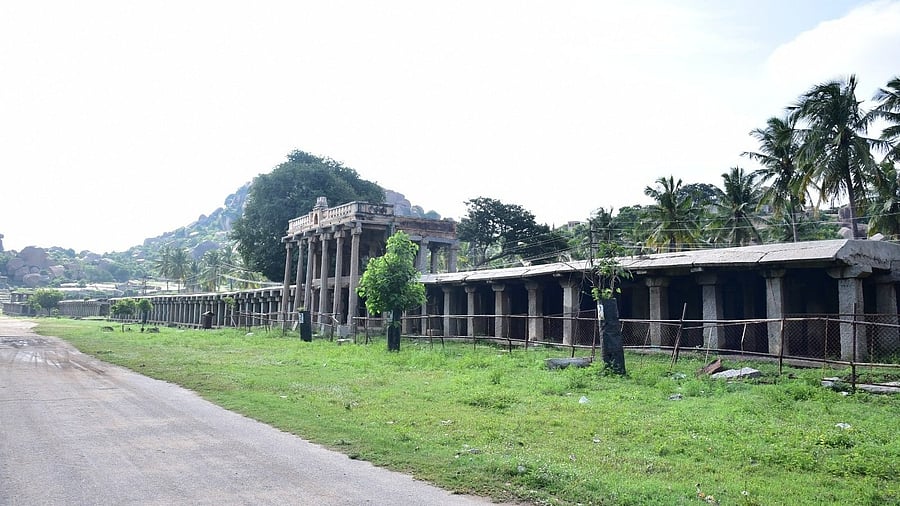
The salumantapas at Hampi, which once housed a thriving bazaar in the medieval Vijayanagar empire’s time.
Credit: DH file photo
Hosapete (Vijaynagar District): A lesson on commerce in a social science textbook for class seven students is bound to leave them baffled. But the National Council of Education Research and Training (NCERT) has succeeded in ensuring a smooth confluence of these two disciplines --– in its textbook --- is a nugget on the glory and commercial activities of the glorious Hampi Bazaars of yore.
The 12th chapter of the book ‘Understanding Markets’ offers students a glimpse into the role and evolution of the marketplace, taking the reader on a journey from its early beginnings in antiquity to the malls and shopping avenues of today. In the lesson also is a detailed description of the riches, not to mention the vast assortment of wares and commodities plied on the streets of Hampi, capital of the Vijayanagar Empire.
The stone pavilion that leads up to the Virupaksha Temple in Hampi, was in its heyday, a buzzing marketplace. Photographs of the stone pavilion, along with the Basavanna Mantapa, and the Maatanga Hill offer readers a glimpse of the setting of this historic marketplace.
The activities of the Hampi Bazaar find mention in multiple accounts left behind by foreign visitors to India. Portuguese traveller Domingo Paes enumerated the numerous commodities sold at the Hampi Bazaar in his account, ranging from essential supplies such as milk and oil to more exotic goods like silk and horses. Another Portuguese visitor Fernao Nunes was left in awe on beholding the richness and the splendour on display at the Hampi Bazaar.
